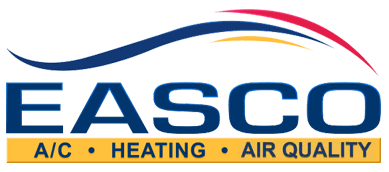These Black Inventors Revolutionized Heating and Cooling
During Black History Month, people seem to focus on the most obvious players––like MLK, Rosa Parks, and President Barack Obama. They seldom think about the “hidden figures” who revolutionized the HVAC field as people know it today. Now, that’s all about to change.
Here, one can meet some of history’s unsung inventors, some of whom include:
David Crosthwait

His research and inventions primarily centered on vacuum pumps, central air conditioners, heat transfer, and air ventilation systems. Crosthwait's findings allowed landmark buildings, like Rockefeller Center and New York’s Radio City Music Hall, to stay well-ventilated throughout the year.
At the time of his passing in 1976, Crosthwait held 39 American patents and 80 international ones. He was also awarded an honorary doctorate from Purdue University.
Alice H. Parker
The Massachusetts Institute of Technology (MIT) admits that despite Alice Parker’s many accomplishments, very little is known about her life. That’s because, when Parker was born, historians paid very little attention to the achievements of Black women. Because of this, many experts aren’t even sure when Parker passed away––although some suspect she died either in the 1920s or in the immediate decades afterward.
Still, despite this lack of information, here’s what historians know about Parker:
- Parker was born in Morriston, New Jersey. Throughout her life, she lamented that her home’s fireplace wasn’t enough to keep the residence adequately heated.
- Parker attended high school at Howard University Academy, which fed into the larger Howard University. Today, it’s considered a Black Ivy League college.
- Parker filed a patent in 1919, which was unheard of for a woman at the time–much less a Black woman. This was when women didn’t even have the right to vote!
- Parker’s patent was for a heating system that drew cool air into a furnace, then delivered warm air after passing through a heat exchanger.
When she filed her patent, Parker was well ahead of the game; central heating and cooling hadn’t been invented yet. Still, her findings were the foundation of many HVAC systems as homeowners know them today.
Lewis Latimer

Latimer’s other achievements include:
- Working with Alexander Graham Bell on the first operational telephone
- Creating carbon filaments for light bulbs, making them easier to produce
- Making a device that prevented elevators from falling into their shafts
- Partnering with Thomas Edison on various ventures
Latimer passed away in 1928. His home, located in Flushing, Queens, is now a historical site.
About Easco Air Conditioning and Heating
Prompt and professional. Those are just two words that previous clients use to describe Easco Air Conditioning and Heating. Since 1982, these professionals have offered same-day service, financing options, and more to the residents of Conroe, TX. Looking for HVAC help this Black History Month? Consult the professionals to learn more.
Distribution Links +
- htv10.tv
- wicz.com
- snntv.com
- central.newschannelnebraska.com
- metro.newschannelnebraska.com
- midplains.newschannelnebraska.com
- northeast.newschannelnebraska.com
- plattevalley.newschannelnebraska.com
- panhandle.newschannelnebraska.com
- wpgxfox28.com
- lifestyle.mykmlk.com
- wtnzfox43.com
- lifestyle.3wzfm.com
- lifestyle.southernsportstoday.com
- lifestyle.thepodcastpark.com
- lifestyle.680thefan.com
- lifestyle.xtra1063.com
- lifestyle.953hlf.com
- lifestyle.rewind1019.com
- lifestyle.us983.com
- lifestyle.countrylegends1059.com
- lifestyle.967wshv.com
- lifestyle.1045thedan.com
- yournewsnet.com
- michigan.yournewsnet.com
- midwest.yournewsnet.com
- northeast.yournewsnet.com
- southeast.yournewsnet.com
- southwest.yournewsnet.com
- lifestyle.earl983.com
- west.yournewsnet.com
- lifestyle.maverick1023.com
- lifestyle.magic979wtrg.com
- lifestyle.1077lakefm.com












 Heat pumps
Heat pumps Heat pumps are highly efficient and can save a lot of money on energy costs over time. They are also very versatile and can be used in various settings. Some benefits of using a heat pump include improved indoor air quality, increased energy efficiency, and versatile climate control.
Heat pumps are highly efficient and can save a lot of money on energy costs over time. They are also very versatile and can be used in various settings. Some benefits of using a heat pump include improved indoor air quality, increased energy efficiency, and versatile climate control.















